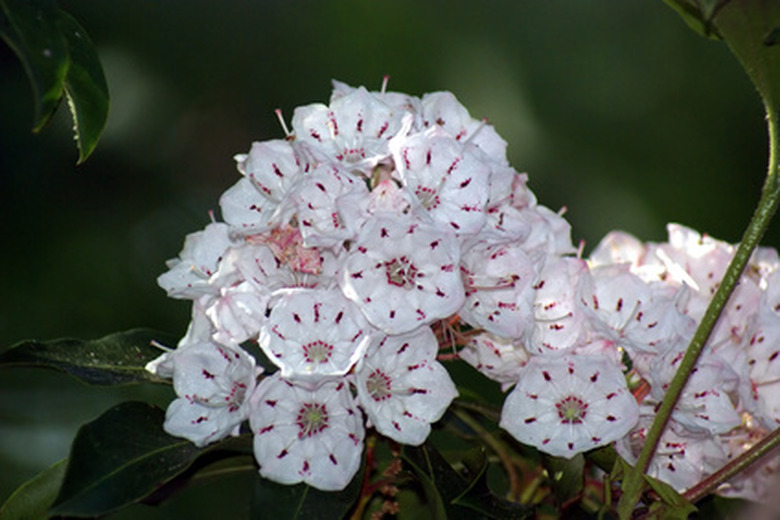Pests On Laurel Shrubs
Laurel plants are large shrubs or small trees with susceptibility to a wide variety of pest problems. Knowing the symptoms to look for will help you identify the particular problem. Familiarize yourself with care requirements, common pests and control methods for healthy laurels in your home garden.
Preventive Care
Pests are less likely to attack vigorous plants and more likely to attack stressed or weakened plants. Proper care greatly increases your laurel shrub's ability to resist or fight pest infestations. Grow laurels in full sun exposure to partial shade. Laurels prefer moist, well-drained soil high in organic content, according to the Clemson University Extension.
- Laurel plants are large shrubs or small trees with susceptibility to a wide variety of pest problems.
- Proper care greatly increases your laurel shrub's ability to resist or fight pest infestations.
Pests
Shothole borers are a type of bark beetle that infests English laurel shrubs as well as fruit trees and woody plants, according to the University of California IPM Online. The shothole borer (Scolytus rugulosus) is small with a cylinder-like shape and a hard body. The borers are black, red or brown depending on the species. Aphids are a sucking pest that infest a vast array of host plants, including the laurel. Aphid bodies are small and appear red, brown, black, yellow or green.
Symptoms and Damage
Shothole borers chew a "buckshot pattern of holes" into bark on laurels; damage includes twig dieback and woody laurel parts that turn into a sticky, gum-like substance due to tissue death. Aphids insert their mouths into plant tissue and suck out the fluid, leaving behind a sugary liquid called honeydew. The honeydew serves as a perfect environment for the germination of fungi that cause a disease called sooty mold. Look for a blackish mold on leaf surfaces as a sign of aphid infestation, according to the University of California IPM Online. Feeding damage causes poor shoot growth and minor cosmetic injury to malformed, discolored leaves that appear yellow.
- Shothole borers are a type of bark beetle that infests English laurel shrubs as well as fruit trees and woody plants, according to the University of California IPM Online.
Natural Control
Remove and destroy affected plant parts for any type of pest infestation on laurel shrubs. Sanitize pruning shears between every cut and from one laurel to the next to prevent the spread of pest infection. Make clean cuts to avoid the creation of wounds that injure the shrub and through which pests invade. For aphids, use a powerful stream of water to push pests from plant surfaces, according to the University of California IPM Online.
Chemical Control
Chemical controls available to home growers will not control shothole borers. Contact a professional for a pyrethroid insecticide treatment of your laurel shrub at first sign of a problem or as a preventive measure. Once borers enter the tree and lay eggs, insecticidal treatments often cannot cure the problem. Chemicals kill aphids on the spot but do not have residual control. Repeated treatments are often necessary. Spray all foliage with insecticidal soap or neem oil, according to the University of California IPM Online.
- Remove and destroy affected plant parts for any type of pest infestation on laurel shrubs.
- For aphids, use a powerful stream of water to push pests from plant surfaces, according to the University of California IPM Online.
